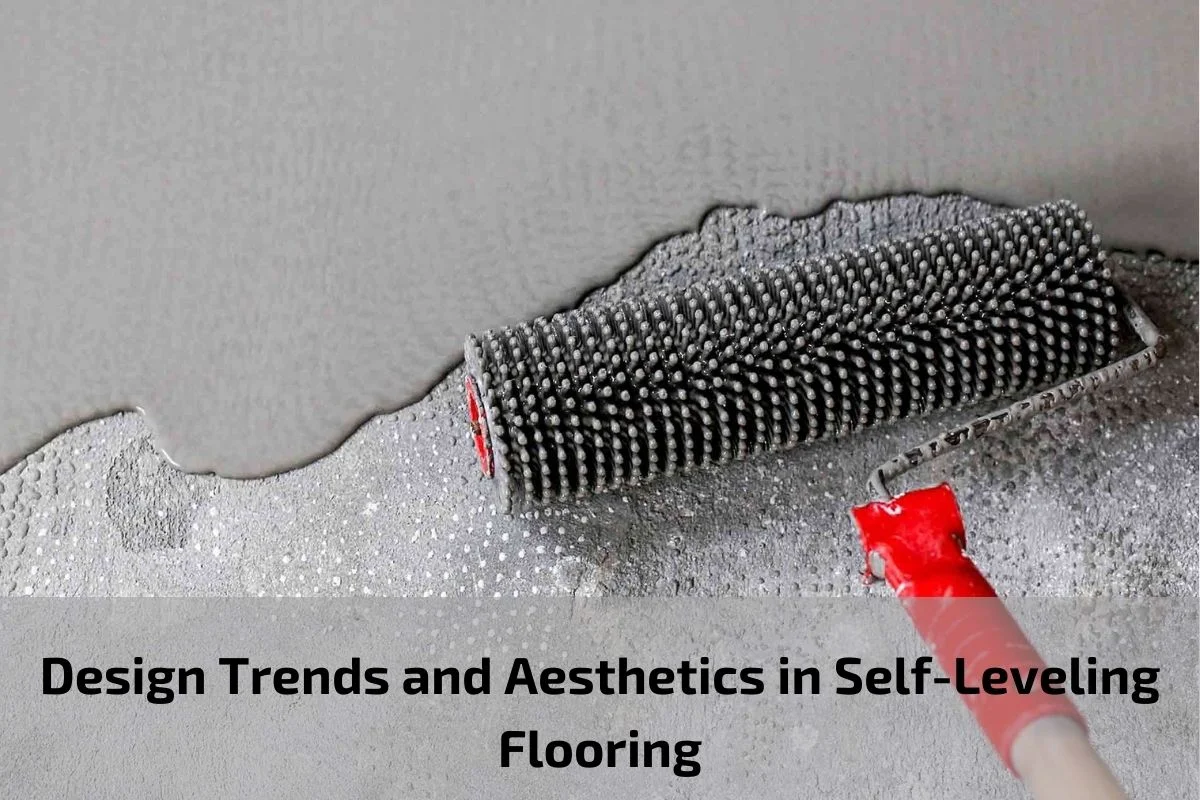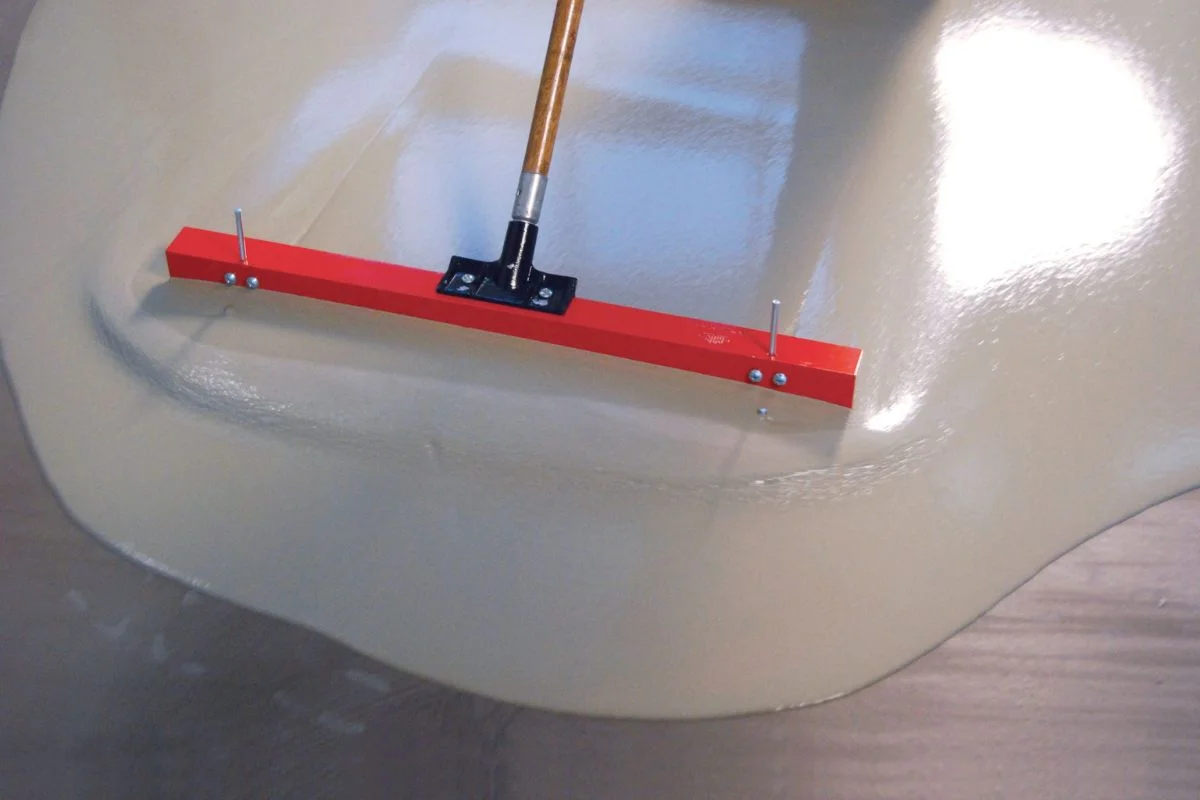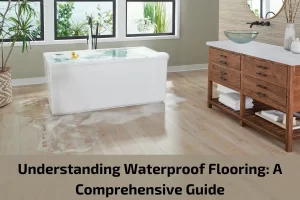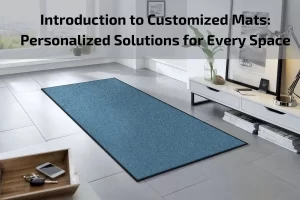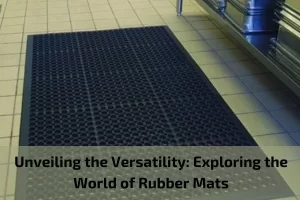In the realm of interior design and construction, flooring serves as the foundation upon which the entire aesthetic and functional aspect of a space rests. Over the years, self-leveling flooring solutions have emerged as a transformative innovation, revolutionizing the way designers approach flooring design and installation. With their seamless finish, versatility, and ability to create striking visual effects, self-leveling floors have become increasingly popular in both commercial and residential settings.
In this exploration of design trends and aesthetics in self-leveling flooring, we delve into the evolving landscape of interior design, where creativity meets practicality to redefine the concept of modern flooring solutions. From sleek and minimalist designs to bold and expressive patterns, self-leveling floors offer a myriad of possibilities for architects, designers, and homeowners seeking to elevate the aesthetics of their spaces.
The Importance of Self-Leveling in Interior Design
In the dynamic world of interior design, flooring plays a pivotal role in defining the aesthetic appeal and functionality of a space. Among the various flooring solutions available, self-leveling stands out as a transformative innovation that has revolutionized the way designers approach interior design projects. The importance of self-leveling in interior design cannot be overstated, as it offers numerous benefits that contribute to the overall success and effectiveness of design concepts. Here are some key reasons why self-leveling has become an indispensable element in interior design:
Seamless Finish: Self-leveling compounds create a smooth and seamless surface that provides a clean and polished look to any space. Unlike traditional flooring methods that may result in uneven surfaces and visible seams, self-leveling ensures a uniform and flawless finish, enhancing the overall aesthetic appeal of the room.
Versatility in Design: Self-leveling flooring offers unparalleled versatility in design, allowing designers to explore a wide range of creative possibilities. From sleek and minimalist styles to bold and innovative patterns, self-leveling can be customized to suit various design themes and preferences, making it a versatile choice for both commercial and residential spaces.
Enhanced Durability: Self-leveling compounds are engineered to provide exceptional durability and resilience, making them suitable for high-traffic areas and environments prone to wear and tear. The robust nature of self-leveling flooring ensures long-lasting performance and minimizes the need for frequent maintenance and repairs, making it a practical and cost-effective solution for interior spaces.
Time and Cost Efficiency: In addition to its aesthetic and functional benefits, self-leveling flooring offers significant time and cost savings during the installation process. Compared to traditional flooring methods that may require extensive preparation and labor, self-leveling can be installed quickly and efficiently, minimizing downtime and disruption to the project timeline.
Compatibility with Various Substrates: Self-leveling compounds are compatible with a wide range of substrates, including concrete, wood, and tile, making them suitable for diverse interior applications. Whether renovating existing spaces or creating new designs from scratch, self-leveling offers flexibility and adaptability to accommodate different substrate conditions and project requirements.
Improved Safety and Comfort: The smooth and level surface created by self-leveling flooring enhances safety and comfort for occupants, reducing the risk of trips, slips, and falls. Additionally, self-leveling compounds can be formulated with additives to improve traction and slip resistance, making them ideal for spaces where safety is a priority, such as healthcare facilities and educational institutions.
Definition and Concept of Self-Leveling
Self-leveling, in the context of flooring and construction, refers to a specialized flooring material or compound designed to create a smooth, flat, and level surface over existing substrates. Unlike traditional flooring materials that may require extensive preparation and leveling of the substrate before installation, self-leveling compounds are engineered to flow and settle into place, automatically filling in low spots, voids, and imperfections to achieve a uniform surface.
The concept behind self-leveling flooring is based on the principle of fluidity and gravity. When mixed with water according to manufacturer specifications, self-leveling compounds form a pourable mixture that flows easily across the substrate. As the mixture spreads, gravity pulls it downward, allowing it to settle evenly and self-level to create a flat and seamless surface.
Self-leveling compounds typically consist of a blend of cementitious materials, aggregates, polymers, and additives that contribute to their flowability, workability, and performance characteristics. Depending on the specific formulation and application requirements, self-leveling compounds may vary in terms of viscosity, setting time, compressive strength, and other properties.
The application of self-leveling compounds involves pouring the mixture onto the prepared substrate and using tools such as trowels, squeegees, or spiked rollers to spread and distribute it evenly. As the compound cures and hardens, it forms a durable and smooth surface that serves as an ideal base for the installation of various flooring materials, including tile, carpet, hardwood, laminate, and resilient flooring.
The key benefits of self-leveling flooring include its ability to:
- Correct uneven or sloping substrates to create a level surface.
- Eliminate the need for extensive floor preparation, such as grinding or sanding.
- Provide a smooth and seamless finish that enhances the aesthetic appeal of the space.Improve the performance and longevity of the finished flooring system.
- Reduce installation time and labor costs compared to traditional leveling methods.
Benefits of Self-Leveling Flooring
Self-leveling flooring offers a range of advantages that make it a preferred choice for various applications in both commercial and residential settings. Here are some key benefits of self-leveling flooring:
A. Seamless Finish: Self-leveling compounds create a smooth and seamless surface that eliminates unsightly bumps, ridges, and unevenness commonly found in traditional flooring installations. The uniform finish enhances the visual appeal of the space and provides a sleek and modern look.
B. Versatility in Design Options: Self-leveling flooring is available in a variety of colors, textures, and finishes, allowing designers to customize the look and feel of the floor to match the aesthetic requirements of the space. From vibrant colors to subtle patterns, self-leveling flooring offers endless design possibilities.
C. Enhanced Durability and Longevity: Self-leveling compounds are engineered to be highly durable and resistant to wear and tear, making them suitable for high-traffic areas and heavy-duty applications. The robust nature of self-leveling flooring ensures long-term performance and reduces the need for frequent maintenance and repairs.
D. Time and Cost Efficiency: Compared to traditional flooring methods that may require extensive preparation and labor, self-leveling flooring can be installed quickly and efficiently, saving both time and money. The streamlined installation process minimizes downtime and disruption to the project schedule, allowing for faster occupancy of the space.
E. Improved Safety and Comfort: The smooth and level surface created by self-leveling flooring enhances safety and comfort for occupants by reducing the risk of trips, slips, and falls. Additionally, self-leveling compounds can be formulated with additives to improve traction and slip resistance, making them ideal for environments where safety is a priority.
F. Compatibility with Various Substrates: Self-leveling compounds are compatible with a wide range of substrates, including concrete, wood, tile, and existing flooring materials. This versatility allows self-leveling flooring to be installed over existing surfaces without the need for extensive demolition or removal, saving time and minimizing waste.
G. Sound and Thermal Insulation: Some self-leveling compounds offer sound and thermal insulation properties, helping to reduce noise transmission and improve energy efficiency in the space. This makes self-leveling flooring an ideal choice for environments where noise reduction and thermal comfort are important considerations.
Installation Techniques and Best Practices of SELF-LEVELING
Surface Preparation:
- Cleanliness: Ensure that the substrate is clean, free of dust, debris, grease, and contaminants that could interfere with adhesion.
- Moisture Content: Test the substrate for moisture content and address any issues to prevent moisture-related problems in the self-leveling compound.
- Substrate Condition: Repair cracks, holes, and uneven areas in the substrate using appropriate patching compounds or repair materials.
Mixing and Application:
- Follow Manufacturer Instructions: Read and follow the manufacturer’s instructions carefully regarding mixing ratios, water content, and application techniques.
- Mixing Procedure: Mix the self-leveling compound thoroughly according to the manufacturer’s recommendations, using a drill and paddle mixer for consistency.
- Pouring and Spreading: Pour the mixed self-leveling compound onto the substrate in sections, starting from the farthest corner of the room and working toward the exit.
- Spreading Tools: Use a gauge rake or smoother to spread the self-leveling compound evenly across the substrate, ensuring a consistent thickness and smooth finish.
- Working Time: Work quickly but efficiently, as self-leveling compounds have a limited working time before they begin to set.
Leveling and Smoothing:
- Self-Leveling Properties: Allow the self-leveling compound to flow and settle into place, self-leveling to create a smooth and even surface.
- Tools and Techniques: Use a spiked roller or trowel to help level and smooth the surface of the self-leveling compound, removing air bubbles and ensuring uniformity.
- Feather Edges: Feather the edges of the self-leveling compound to blend seamlessly with the surrounding substrate and prevent uneven transitions.
Curing and Drying:
Curing Time: Allow the self-leveling compound sufficient time to cure and dry completely before installing any flooring materials on top.
Ambient Conditions: Maintain consistent ambient temperature and humidity levels during the curing process to ensure optimal curing and drying of the self-leveling compound.
Drying Time: Follow the manufacturer’s recommendations regarding drying times, which may vary depending on the type and thickness of the self-leveling compound used.
Quality Control and Inspection:
Inspection: Inspect the cured self-leveling surface for any imperfections, bubbles, or irregularities that may require remediation.
Rectification: Address any issues promptly by sanding, patching, or applying additional coats of self-leveling compound as needed to achieve the desired finish.
Quality Assurance: Conduct quality assurance checks to ensure that the self-leveling installation meets the specified requirements and standards.
Professional Installation Considerations:
Training and Expertise: Consider hiring trained and experienced professionals for the installation of self-leveling flooring, especially for large or complex projects.
Equipment and Tools: Ensure that installers have access to the necessary equipment, tools, and safety gear required for the proper installation of self-leveling compounds.
Adherence to Standards: Adhere to industry standards, guidelines, and best practices for the installation of self-leveling flooring to achieve optimal results and performance.
Maintenance and Care of Self-Leveling Floors
Regular Cleaning:
- Sweep or Vacuum: Regularly remove dust, dirt, and debris from the surface of the self-leveling floor using a soft-bristle broom or a vacuum cleaner with a soft brush attachment.
- Damp Mopping: Periodically damp mop the floor using a neutral pH cleaner and warm water to remove stains, spills, and stubborn dirt buildup. Avoid using harsh chemicals or abrasive cleaners that could damage the surface.
Stain Removal:
- Prompt Action: Immediately clean up spills and stains to prevent them from setting into the surface of the self-leveling floor.
- Gentle Cleaning: Use a soft cloth or sponge dampened with a mild detergent solution to gently scrub away stains and spills. Rinse thoroughly with clean water and dry the surface with a soft towel.
Protecting the Surface:
Use Furniture Pads: Place felt pads or furniture glides under heavy furniture legs to prevent scratches, scuffs, and indentations on the surface of the self-leveling floor.
Avoid Sharp Objects: Avoid dragging or sliding heavy objects or sharp items across the surface of the floor, as this could cause damage to the finish.
Preventive Maintenance:
Mats and Rugs: Place mats or rugs at entryways and high-traffic areas to trap dirt, moisture, and grit before it can be tracked onto the self-leveling floor.
Regular Inspections: Periodically inspect the surface of the self-leveling floor for signs of wear, damage, or deterioration. Address any issues promptly to prevent further damage and maintain the integrity of the floor.
Special Considerations:
Temperature and Humidity: Maintain consistent temperature and humidity levels in the room to prevent expansion, contraction, and moisture-related problems with the self-leveling floor.
Chemical Exposure: Avoid exposure to harsh chemicals, solvents, and acidic substances that could damage the surface of the self-leveling floor. Clean up spills promptly and use appropriate cleaning products.
Professional Maintenance:
Periodic Maintenance: Consider scheduling periodic professional maintenance and cleaning services for the self-leveling floor to ensure optimal performance and longevity.
Recoating and Refinishing: Depending on the type of self-leveling floor and its level of wear, periodic recoating or refinishing may be necessary to restore the surface and enhance its appearance.
Conclusion
In conclusion, self-leveling floors represent a remarkable innovation in the realm of interior design and construction, offering a host of benefits and practical advantages for both residential and commercial spaces. Throughout this exploration of self-leveling flooring, we’ve delved into its definition, installation techniques, and maintenance practices, highlighting its significance in modern design and construction projects.

